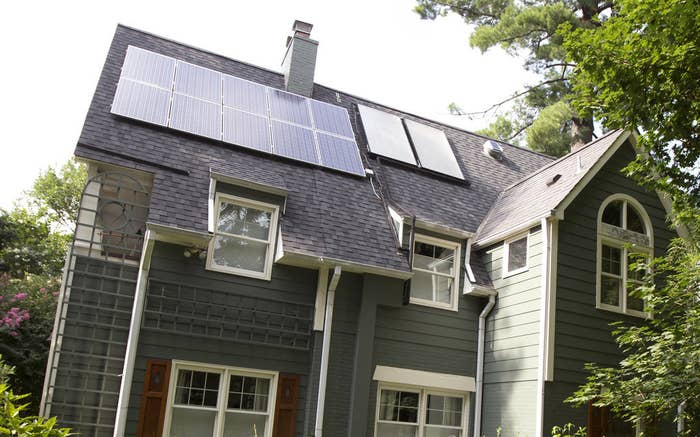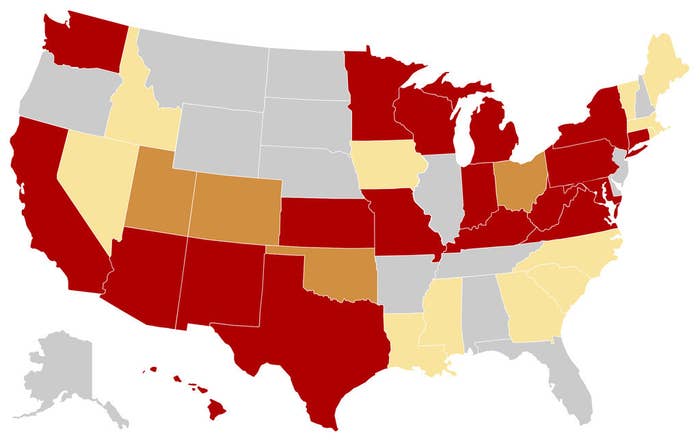
Solar panels are sprouting on rooftops across the country, thanks to plummeting costs. And in response to this solar revolution, many power companies are seeking dramatic changes in how they charge for electricity.
Nearly 600,000 United States homes and businesses generate their own solar power. In 42 states, if these solar users generate more electricity than they use, power companies are required to buy the excess. Some utilities have responded by imposing surcharges — $50 a month for Arizona residents, for example — causing an uproar in several states.
But a bigger fight is playing out in 19 states, where newly approved or proposed billing plans are changing how everyone — not just solar panel owners — pays for electricity.
For most people the changes will mean higher power bills, ranging from an 8% increase in a new Wisconsin plan to a 6% increase in a San Francisco one.

But here's the thing: These companies aren't just increasing the price per kilowatt hour. Instead, the new plans start out with a higher base monthly rate for everyone on the electrical grid, before the meter even starts running.
It's like a cell phone data plan, in which people are charged different flat rates depending on their typical usage, energy analyst Gregory Nemet of the University of Wisconsin, Madison, told BuzzFeed News.
A utility in Phoenix, for example, debuted a billing plan charging $18.50 a month as a base rate, on top of a complicated tier system based on usage. A typical summer month of 1,000 kilowatt hours of juice would cost $24 for the first 400, plus $41 for the next 400, and another $26 for the last 200.
"The result is that people have much weaker incentives to conserve energy," Nemet said, because they will have to pay a fixed price regardless. This change, he worries, may mean that fewer people will invest in efficient appliances and rooftop solar panels.
Industry critics say this billing switch is a deliberate attempt to hurt solar. "Why should I invest in solar panels if I have to pay about the same for electricity anyway?" Bradley Klein of the Environmental Law and Policy Center in Chicago told BuzzFeed News. "We see these rate changes as a troubling trend where utilities are trying to insulate their profits and invert the math on how solar pays back over time."
Some lawmakers are pushing back against the new plans, arguing that they're unfair to people who use less power, such as students, people living in apartments, and the elderly. Last week, Minnesota regulators approved a 4.6% increase per kilowatt hour for Xcel Energy, but nixed the company's request for a base rate charge. At the same time, a Connecticut legislative committee released a bill capping base rate charges at $10 a month.
Both solar and power industry advocates contend that the other side cheats the public.
"I'd like to correct the pervasive misperception that our industry is working to stop rooftop solar," said David Owens of the Edison Electric Institute, the trade group for the $90 billion electric power industry, in a February briefing for investors.
Owens pointed out that solar panel owners receive state and federal tax credits unavailable to others while generating the kind of electricity that is "most costly." That's because, Owens said, rooftop solar isn't as cheap a way to generate juice as burning natural gas, nuclear power, or even industrial solar facilities.
Solar customers also benefit from "outdated" rules, he said, which allow them to sell electricity to power companies at prices far higher than non-solar power.
What's more, he said, is that even people fortunate enough to sell solar power to utilities must rely on the grid at night. He said it was "critical and fair" that everyone who uses the grid pay for its upkeep, regardless of which direction the electrons travel.
Not everyone agrees on the fair way to divvy up the costs, however. In Tucson, for example, a pricing plan rolled out this month will cut the high buyback prices that solar panel owners charge Tucson Electric Power, upsetting solar advocates.
"At first glance, it looks extremely unfair," Ken Johnson of the Solar Energy Industries Association in Washington, D.C., told BuzzFeed News, noting that Arizona's rules would pull the economic rug out from under solar panel owners who invested in panels costing $15,000 to $40,000 under the old rules.
"From our perspective, solar energy is a big plus for the grid," Johnson added. Solar power intensifies on sunny afternoons, for example, when demand peaks for summer air-conditioning.
Studies from Utah, Mississippi, Vermont, and Nevada have shown that solar helps cut the need for future power plants and high-voltage wires. In Nevada, a study found that over their lifetime, solar panels saved the state $166 million in grid improvements.
"Solar means the old way of paying for electricity makes less and less sense," MIT economist Richard Schmalensee told BuzzFeed News. Once you get past the rhetoric about what is fair, somebody has to pay to keep the grid going, he said. The question is who gets skinned: utilities, solar owners, or everyday electricity customers?
It's a tough problem. On one hand, states want to encourage solar power because it is clean energy. But on the other, charging everyone a higher base rate to pay for a few individual's solar-equipped roofs makes people angry.
And slapping surcharges on solar panel owners, "is not politically smart," Schmalensee added. "You are just antagonizing a bunch of wealthy, politically active people."
"Solar power is neat," he said. "But if it is a good deal for society, we really need to ask if subsidizing it through our power bill is really the smartest way to do it."
In the meantime, you may want to keep an eye on your electric bill.
